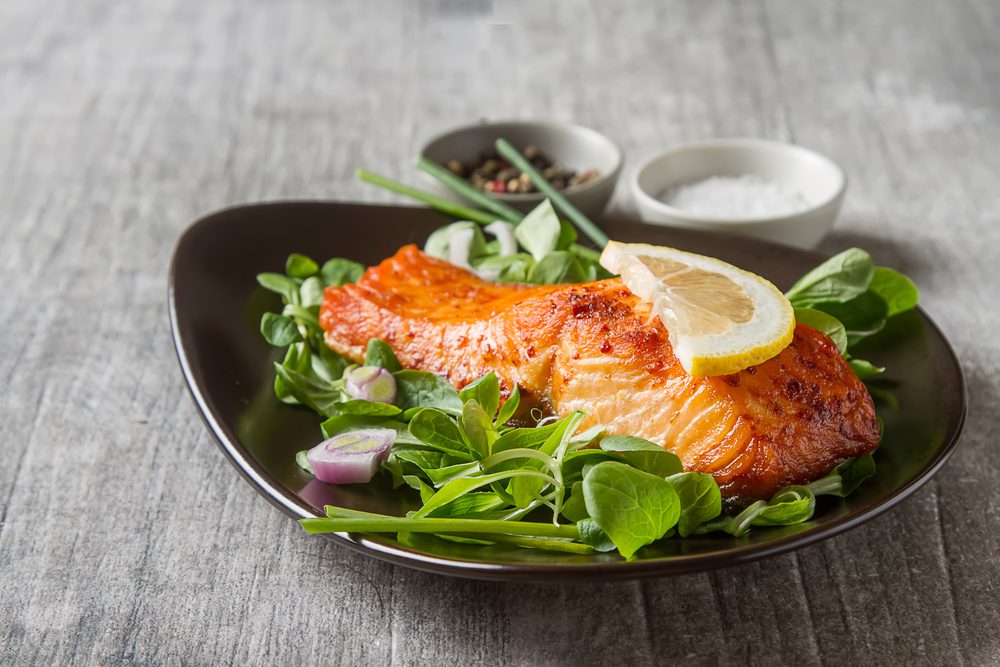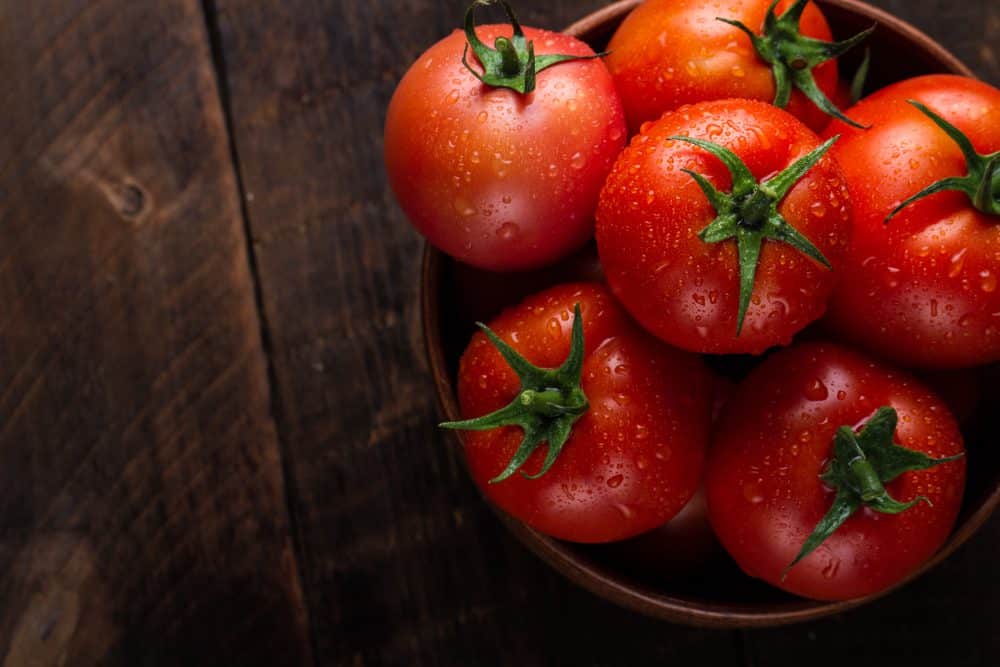Disease-Fighting Foods
The way you eat is one of the most crucial parts of living a nutritious lifestyle. Cardiovascular disease is actually considered the number one killer in the United States, along with stroke, respiratory infections, diabetes, obesity, and many other chronic diseases that are rampant in our country.
Fortunately, most of them can be kept under control and are preventable. Eating the right kind of disease-fighting foods will play a huge role in lowering your disease risk. Interestingly, in many other countries worldwide, chronic illness and cancer rates are much lower than in the Western world.
But suppose you were to bring those people to the United States and have them change up their diet to a standard Western one filled with sugar, salt, junk food, trans-fats, red meat, and fast foods.
In that case, their disease rates and risk of developing cancer will equal the American population within five years. Adding certain disease-fighting foods into your daily meals can keep your body healthy, and your mind sharp, and have you feeling fantastic each day!
Keep reading to see the 10 best foods you can add to your diet and prevent some of these terrible, life-threatening diseases before they take hold!

Disease-Fighting Food: Fatty Fish
You’ll find plenty of Omega-3 fatty acids in fish like salmon and tuna. These are some disease-fighting foods that can help lower your blood fat and prevent blood clots, which are associated with heart disease.
The American Heart Association advises eating at least 2 servings of fish, especially the fatty kind, at least two times a week. If you’re eating a diet rich in fatty fish, it will help you reduce the risk of cardiovascular disease.
And there’s another benefit to eating meals that contain salmon or tuna. You’ll reduce your potential intake of saturated fat from higher-fat entrees. So, fire up that grill or put a few pieces of fish under the broiler for a quick, delicious, and heart-healthy meal.
Tip: You can buy fresh, frozen, or canned fish. But fish with the highest content of omega-3 are salmon, mackerel, tuna steaks, herring, trout, anchovies, and sardines.
Disease-Fighting Food: Eggs
It turns out that saturated fat, which eggs have very little of, plays a more significant role than the cholesterol in food promoting your blood cholesterol. Eggs are crammed with economical, high-quality protein and are an excellent source of the carotenoids lutein, choline, and xanthine.
Actually, eggs are one of the most amazing sources of dietary choline, an essential nutrient, especially for pregnant women. They have been known to supply nutrients that stimulate eye health and help prevent age-related macular degeneration, which is the highest cause of blindness in older folks.
The American Heart Association has given eggs the thumbs-up for healthy living. So, as long as you limit your average daily cholesterol intake to 300 mg, you can enjoy an egg each day. And they’re modifiable to every meal. You can enjoy eggs for a quick breakfast or even pack a hard-boiled egg for a tasty, high-protein snack.
Make sure you keep reading to the end for an amazing bonus recipe!
Disease-Fighting Food: Berries
Include more berries in your diet for a potent dose of disease-fighting foods. The U.S. Department of Agriculture has stated that blueberries are a top antioxidant-rich fruit, followed by cranberries, blackberries, raspberries, and strawberries.
They include an antioxidant called anthocyanin, which helps neutralize cell-damaging molecules that can help lead to chronic diseases, including cancer and heart disease. Berries, particularly cranberries, are also known to help ward off urinary tract infections.
You can enjoy a cup of fresh berries every day, as a snack, over your cereal or yogurt, in muffins, salads, or smoothies… or even as frozen treats. The possibilities are unlimited when it comes to berry recipes.

Disease-Fighting Food: Whole Grains
Our grandmas used to urge us to start the day with a bowl of oatmeal, but did she know that the soluble fiber from oats helps lower blood cholesterol levels? Whole grains include the nutritional components which are typically deprived of any refined grains.
They contain folic acid, selenium, and B vitamins and are essential to heart health, weight control, and reducing the risk of diabetes. Their fiber content helps keep you feeling full between meals too and promotes digestive health. Enjoy at least three servings a day of whole-grain goodness.
This includes whole wheat, quinoa, barley, rye, millet, brown rice, and wild rice. But also whole-grain pasta, bread, and cereals. The American Dietetic Association says that the daily recommendation for fiber is 21-38 grams, depending on your sex and age.
Disease Fighting Food: Dairy
Dairy foods are the best food source of dietary calcium and are full of protein, vitamins, and minerals, which is key to fighting osteoporosis. Other calcium-containing foods include legumes, dark green leafy greens such as kale, broccoli, and collards if you can’t tolerate dairy.
And even calcium-fortified soy products, juices, and grains. Beyond strong bones, this disease-fighting food can also help you lose a few extra pounds. Studies are ongoing, but some research has suggested that three daily servings of dairy, as part of a calorie-controlled diet, can help lower belly fat and improve weight loss.
Low-fat dairy foods make fantastic snacks because they include both carbs and protein. And they are an especially perfect snack for people with diabetes and everyone else because they help maintain blood sugar levels.
Whip up a quick smoothie with low-fat milk or yogurt, just a splash of orange juice, and a handful of those berries we mentioned for an energizing meal substitute or anytime snack.
Tip: Watch out for fruit or flavored yogurts, which contain a lot of added sugar. Buy plain yogurt instead and add your own fruit. Look for the ones with “live active cultures” such as Lactobacillus, L. acidophilus, L. bulgaricus, and S. thermophilus.
Bonus Tip: You can even use yogurt in place of mayonnaise or sour cream in dips or sauces.
Disease-Fighting Food: Sweet Potatoes
This vegetable is probably an acquired taste, but one of the easiest ways to make a nutritious dietary change is to think of “sweet” instead of “white” potatoes. These luscious orangy tubers are loaded with an abundance of antioxidants, phytochemicals, including beta-carotene, vitamins C and E, calcium, copper, iron, folate, and potassium.
The fiber in this disease-fighting food stimulates a healthy digestive tract, and the antioxidants play an essential part in preventing heart diseases and cancer.
The natural sweetness aspect of them means a roasted sweet potato is delicious without any other additional fats or flavor enhancers. You can substitute sweet potatoes in any recipes that require white potatoes or apples to boost the nutrients in your meals.
We have many other disease-fighting foods to talk about, so keep reading!

Disease-Fighting Food: Tomatoes
These juicy fruits of summer are bursting with flavor and lycopene, an antioxidant that can help protect against cancer. They also deliver a huge quantity of vitamins A and C, potassium, and phytochemicals, which have been known to reduce the risk of prostate cancer specifically.
High levels of lycopene can be found in other disease-fighting foods such as pink grapefruit, watermelon, and carrots. But tomatoes are also a natural anti-inflammatory, which means that they can help fight joint pain and arthritis.
You don’t necessarily have to eat FRESH tomatoes, either. Dried tomatoes are also full of this super-healthy substance. Enjoy tomatoes raw, cooked, chopped, sliced, or diced as part of any meal or snack.
Bonus: Try stuffing a tomato half with spinach and top it with grated cheese for a delicious and colorful side dish.
Tip: Lycopene becomes more potent for your body to use when tomatoes are prepared and heated in healthy fat such as olive oil.
Disease-Fighting Food: Nuts
You may have been staying away from nuts because they are high in fat. However, you only need a few to get the health benefits they have to offer. For example, almonds can lower your blood pressure naturally, and the high levels of vitamin E can keep the brain agile and your skin supple.
Almonds can even help you lose weight. Their high-fiber content will keep you feeling fuller, but they also stop your body from absorbing some fat. A study performed at Loma Linda University in California showed that people who snacked on almonds every day lost 62 percent more weight and 56 percent more body fat than those who did not eat any at all.
Even though nuts are full of fat, they’re the healthy, mono- and polyunsaturated kind, which helps lower your cholesterol levels and help you prevent heart disease.
Also, they’re a good source of fiber, protein, selenium, vitamin A and E. Nuts will even boost your energy levels, helping dieters stay on track. So enjoy nuts, but just be mindful of your portion size. Try to limit yourself to one ounce a day. That’s about 28 peanuts, 14 walnut halves, or just 7 Brazil nuts.
If you’re looking for some delicious and nutritious nuts, check these out, because they’re affordable and amazing for your well-being!
Disease-Fighting Food: Cauliflower
Studies have shown that eating more of this disease-fighting food can significantly reduce the risk of developing numerous types of cancer, including breast, colon, prostate, bladder, and ovarian cancer. Cauliflower and its cousins, broccoli, kale, collards, and Brussels sprouts, contain nitrogen compounds that may help prevent tumors.
This vegetable is also incredibly versatile. You can eat it raw, sautee it, boil it, steam it, or roast it. You can even mash it and replace potatoes for a less starchy and less carby side dish.
Blend it into a raw cauliflower creme soup or shape it into some spicy cauliflower potato burgers. You can also make a cauliflower Crust Pizza! But, one thing’s for sure. Cauliflower is outstanding when it comes to incorporating it into recipes.
Tip: Steam or stir-fry, adding healthy oils and herbs and seasonings for flavor. Try adding some cauliflower to soups, casseroles, and pasta dishes.
Disease-Fighting Food: Grapes
Besides making that tasty wine we love so much, red grapes contain a phytochemical called resveratrol, which is a known anti-inflammatory. This cancer-fighting powerhouse is known to reduce the risk of developing chronic disease.
Along with being delicious, grapes contain a cancer-fighting phytochemical known as resveratrol. This phytochemical has anti-inflammatory and antioxidant properties to reduce the risk of infections.
So eat plenty of red grapes for snacks or enjoy a glass of red wine with dinner. However, just one glass because the alcohol will kill off any benefits of your overindulgence.
Bonus: Grapes, of course, can be eaten raw, but you should also try enjoying them roasted in this Thyme-Roasted Grapes recipe:
You’ll need:
- 1 pound of red seedless grapes;
- 1 tbsp of olive oil;
- Salt and pepper;
- 1 – 2 tsp coarsely chopped fresh thyme or rosemary.
Directions:
- Preheat your oven to 425 degrees.
- Snip the grape bunches into small clusters using a knife or kitchen shears and arrange them on a baking sheet.
- Drizzle some olive oil over them and gently rub the oil onto the grapes to coat lightly.
- Finally, sprinkle with some salt and pepper to taste. Pop them in the oven and roast for about 8 minutes, then sprinkle with some coarsely chopped fresh thyme or rosemary, your choice.
- Return the baking sheet to your oven and continue roasting for another 3 to 5 minutes, or until grapes have softened and puckered or split a bit.
- Serve warm as a complement to cheese.
So how easy does this list look? Luckily, most of the items we’ve listed are already in your fridge or pantry. Be sure to let us know of any other helpful disease-fighting foods you may know!
And if you’ve enjoyed reading this article, you’ll love: 6 Common Medication Side Effects And How To Deal With Them






One Response
This is a great read.